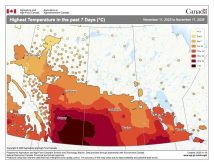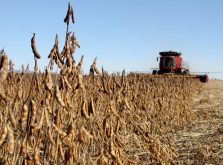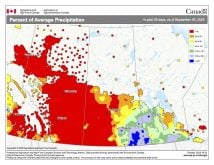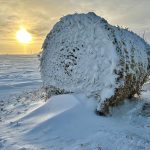June seemed to go by in a flash.
We are now halfway through 2022, and depending on where you live, it has been a very interesting six months.
We will look back and see how June weather played out across the Prairies, and then look ahead to see what forecasters are calling for during July and August.
Regarding sea ice conditions around the poles, it’s the middle of winter in Antarctica so it has rapidly expanding sea ice. Amounts of ice in this region were low this past summer and have remained basically below the interdecile range (lowest 10 per cent of amounts) up to the present.
Read Also
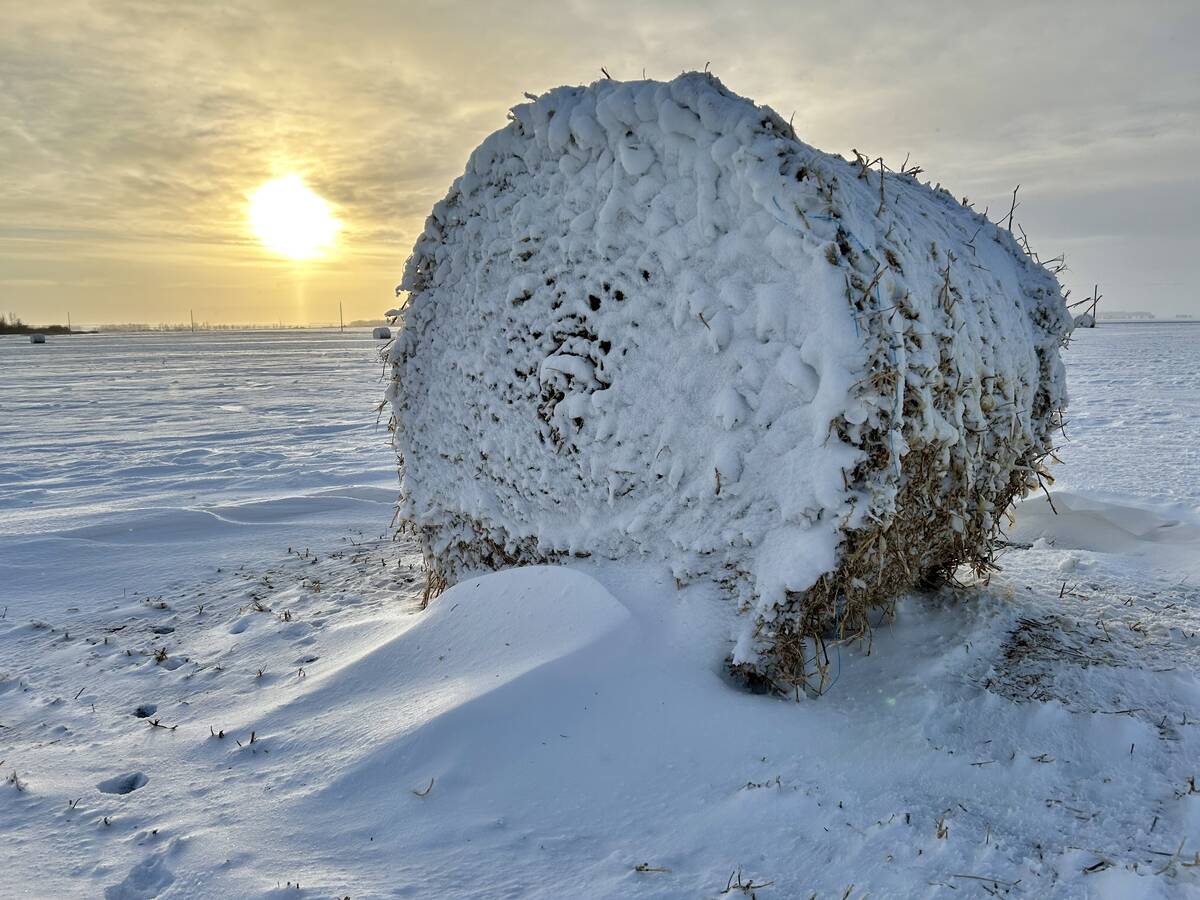
Prairie winter snowfall forecast 2025-2026
How much snow should farmers in Alberta and elsewhere on the Canadian Prairies expect for the rest of December 2025 and into January-February 2026?
In the Arctic, after a winter that saw ice amounts well below the interdecile range, ice melt in the spring was slow, allowing ice cover to rise to the interquartile range (lowest 25 per cent). In June, ice began to melt rapidly and total ice cover once again fall well below the interdecile range.
Globally, temperatures continue to run warm, with May coming in around the sixth warmest on record, even with the cooling effects of the ongoing La Niña across the Pacific. The National Oceanic and Atmospheric Administration (NOAA) is forecasting a 99 per cent probability of 2022 being one of the top 10 warmest years on record, with a nine per cent probability of being one of the top five warmest.
Back to our own weather, how did the numbers add up for June?
In Alberta, the southern and central regions had a warmer and wetter than average June. Northern regions saw a warmer and drier than average month.
Edmonton reported a mean monthly temperature in June that was about 2 C above average. Calgary and Peace River came in about 0.75 C above average. Rainfall was well above average in both Calgary and Edmonton, with both regions reporting more than 100 millimetres. That is about 40 millimetres above their long-term June averages. The Peace River region missed out on the heavier rains, with amounts coming in around 75 per cent of average.
Saskatchewan was a different story. Both Regina and Saskatoon reported monthly temperatures near average, with precipitation coming in below average to well below average in some regions. Regina recorded only 10 millimetres of rainfall, a good 60 millimetres below average, and Saskatoon had 40 millimetres, or about 25 millimetres below average.
After a wet April and May, most regions in Manitoba were hoping for a drier June. Unfortunately, this didn’t happen. Southern regions, including Brandon and Winnipeg, recorded amounts greater than 100 millimetres (20 to 30 millimetres above average). The Dauphin region was a little drier, with amounts of about 70 millimetres, which is a few millimetres below average.
Wet conditions usually equal colder than average temperatures, but thanks to a couple of really warm days, mean monthly temperatures ranged from 0.5 C above average in Winnipeg and Brandon to a little bit below average in the Dauphin area.
Overall, June was a bit of a bookend month, with western and eastern regions seeing warm and wet conditions while in between, Saskatchewan had near-average temperatures and dry conditions.
The big question now is what kind of weather will occur in the critical months of July and August.
Looking at different forecasts, it seems as though you can simply pick whatever type of weather you want to happen and there is a forecast calling for it. To me, that means confidence in the forecasts is low.
The Old Farmer’s Almanac is calling for cooler and wetter than average conditions in both months, while the Canadian Farmers’ Almanac is calling for warmer than average temperatures along with near-average precipitation.
Looking at the computer models, the Climate Forecast System (CFS) model is calling for cooler than average temperatures across southern and central regions in July with above-average temperatures to the north and west. Precipitation is forecast to be below average.
The August forecast is for warm toward more average values over southern and central regions, with surrounding areas warming to well above average. Precipitation looks to be on the dry side.
The CanSIPS model is calling for a similar pattern of temperatures but is leaning toward wetter than average conditions in July and near average amounts in August.
The NOAA appears to be calling for near average temperatures over eastern regions and above average temperatures in the west. Precipitation is forecast to be near to slightly below average.
The Weather Channel is calling for well above average temperatures in July and slightly above average temperatures in August.
If we look at all the forecasts together, there are three outlooks calling for cooler temperatures over central and eastern regions, one near average, and one above average. So, the odds are in favour of a cooler than average summer. Over western regions, the odds increase for a warm summer, with all the models, to some extent, showing near to above average temperatures.
My own gut is calling for a gradual warming to above average temperatures in July and August across all three provinces, with a good chance of seeing near to above average precipitation in July and near to below average amounts in August.





